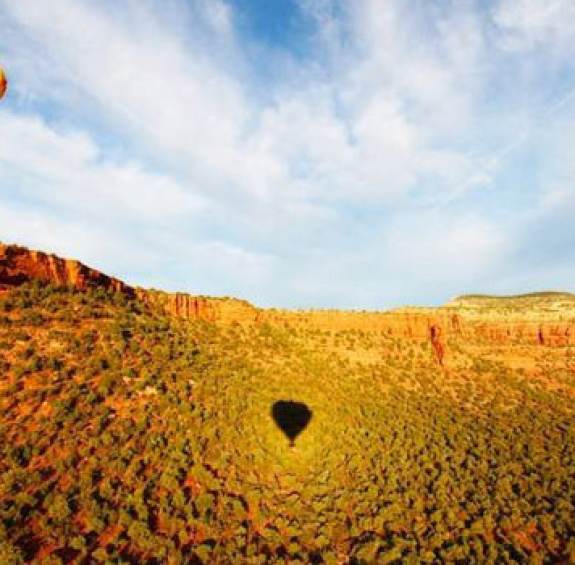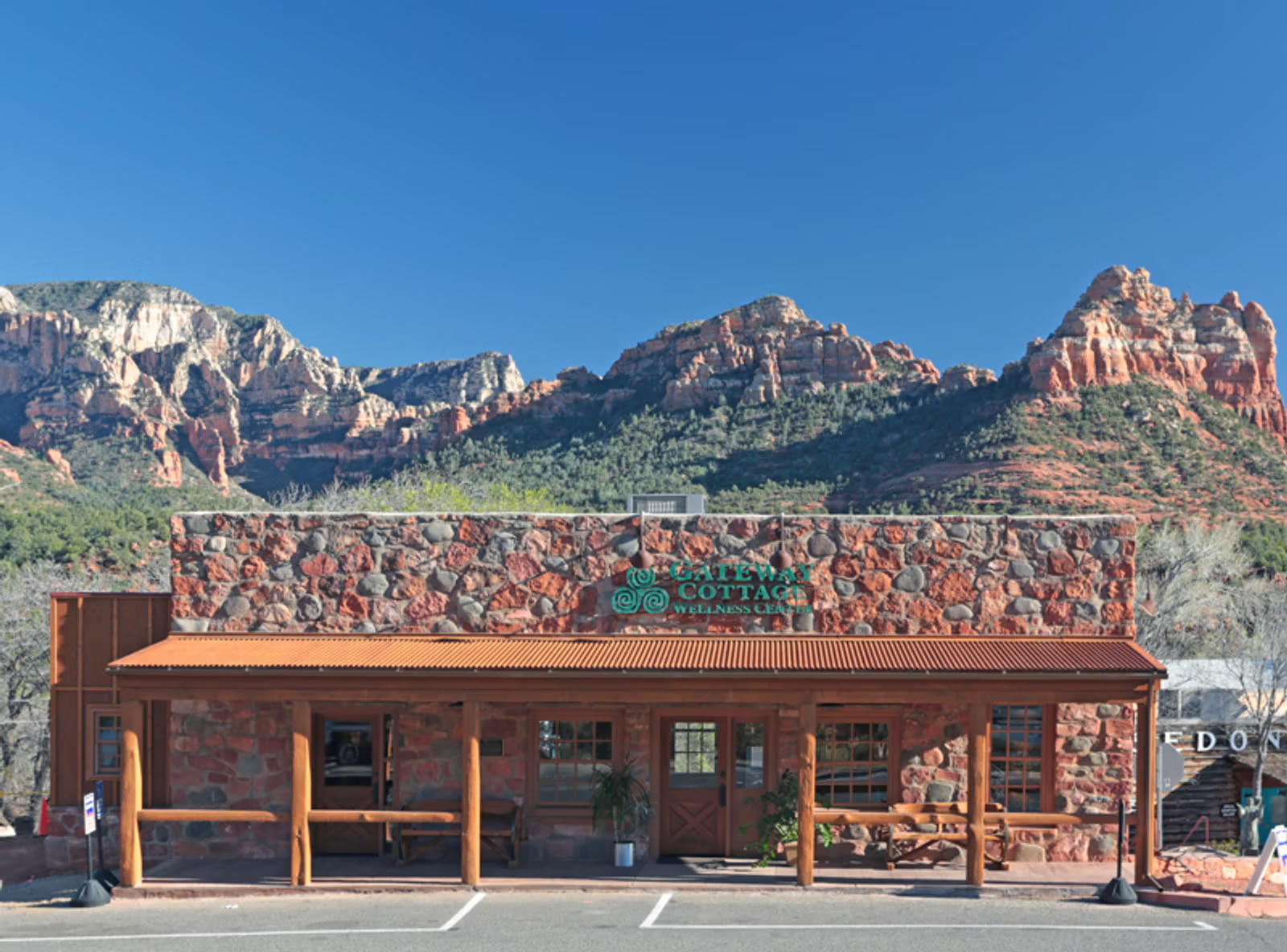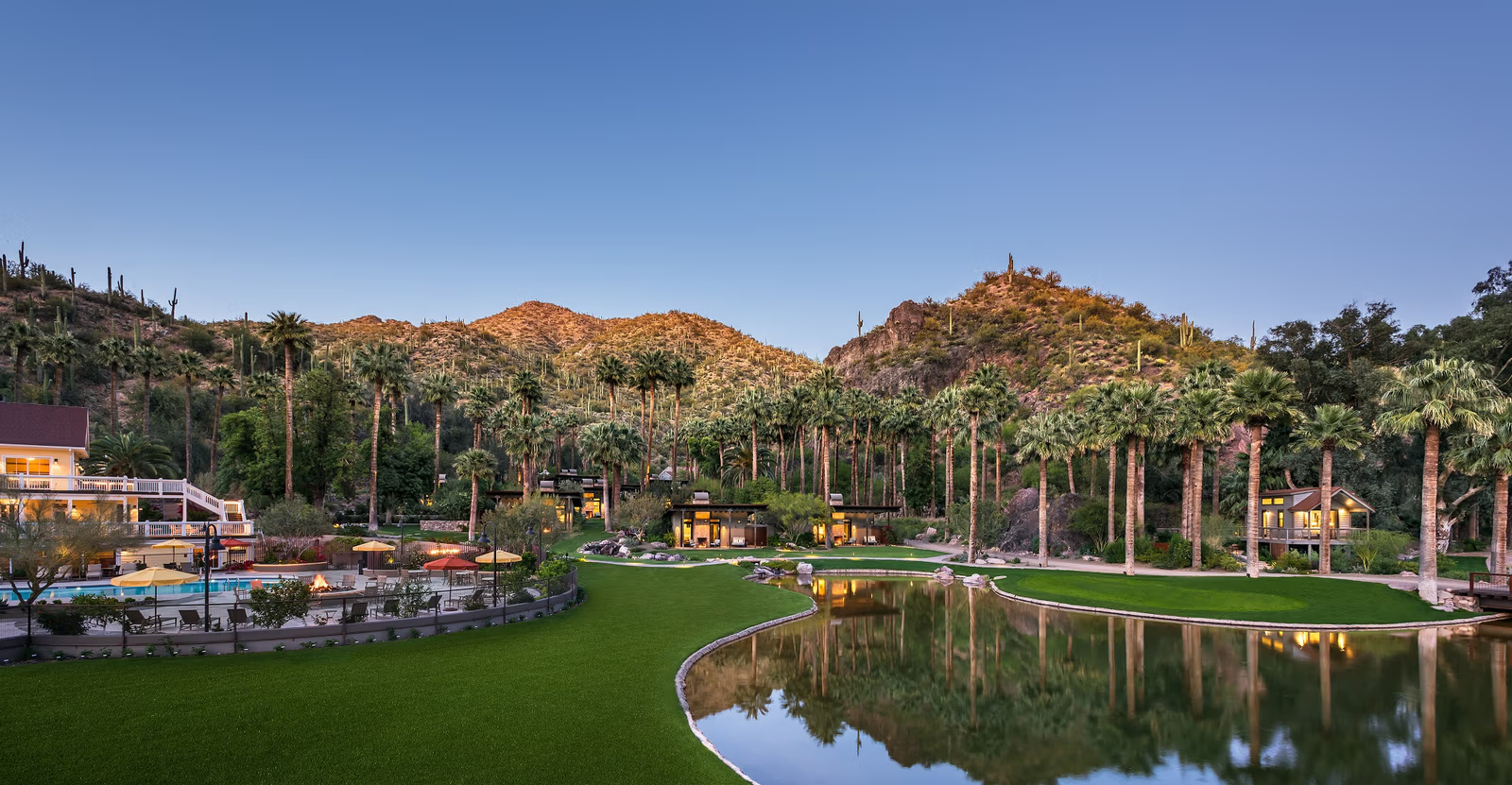Sun salutations
Watch the sunrise from a mountain peak.
Nature's most magnificent metaphor for new beginnings—the sunrise—is best experienced from a mountaintop. Start your day with an easy hike along the Baldwin Loop Trail in Sedona, and drink in views of Cathedral Rock along the way.
Or trek up the aptly named Sunrise Peak via the moderate 3.6-mile round-trip Sunrise Peak Trail in Scottsdale's McDowell Mountains to watch the sun illuminate Four Peaks and Camelback Mountain.
In Tucson, you can park at the base of Sentinel Peak (or "A" Mountain for the University of Arizona) and walk up before the gates open at 7 a.m. For those who'd rather drive than hike, the Cactus Forest Loop at Saguaro National Park features a paved, eight-mile trail with scenic pullouts.
The air up there
Drift above the Sonoran Desert.
Get a new perspective on the desert from a hot-air balloon. Both Rainbow Ryders and Hot Air Expeditions offer daily sunrise rides from metro Phoenix all year long, as well as sunset balloon rides between November and March. As you drift over cacti, mountains and wildlife, keep an eye peeled for landmarks like Camelback Mountain and Lake Pleasant. Or simply let the views inspire an experience like no other.
Not into heights? Then catch an equally spectacular view from the ground at Lake Havasu City's Havasu Balloon Festival, which features four days of balloons, carnival rides, live music and car and air shows. Or check out the White Mountains Balloon Festival, which sees up to 20 balloons take flight during the three-day event in Pinetop-Lakeside.

Flights of fancy
Glimpse a rare bird species.
From hummingbirds to shrikes, Arizona is home to a bounty of rare birds. In Madera Canyon, situated 25 miles southeast of Tucson, time slows down while you observe more than 250 species including the Elegant Trogon and rare Berylline Hummingbird.
The 23,000-acre Gila Box Riparian National Conservation Area, located north of Safford, provides nesting grounds for more than 200 species of birds, while the San Pedro Riparian National Conservation Area near Sierra Vista rewards patient observation with glimpses of rare birds like the Gray Hawk, Yellow-Billed Cuckoo and Green Kingfisher.
Energy recharge
Visit a vortex.
Sedona may be famous for its vortexes, but it's not the only place in Arizona where the concentrated energy is palpable. Lake Havasu City and the surrounding area boast five vortexes where visitors can tap the up-flow (rejuvenating energy moving up and out of the earth) or inflow (calming energy flowing back into the earth). Check out the Buoyed Swim Area at Rotary Community Park, which combines both of Lake Havasu's geographical highlights (water and vortex) for a restorative experience.
Wild and free
Stop and smell the wildflowers.
March generally kicks off wildflower season, a three-month spree of riotous color. Get in on the mood-boosting beauty at Usery Mountain Regional Park in Mesa, where you'll find Mexican gold poppies, fairy dusters and strawberry hedgehog. For a peek at fiddleneck, lupine and popcorn flowers, stroll along the Waddell Trail in White Tank Mountain Regional Park, just west of Phoenix.
Similar blooms are on display further south: Picacho Peak State Park bursts into a rainbow of brittlebush and poppies, while Oracle State Park in the Catalina Mountains offers up a tableau of mariposa lilies, desert hyacinths and morning glory.
Daytrip drive-thru
Take a leisurely drive.
To appreciate the diverse beauty of the Grand Canyon State, you don't need to camp, hike or even step outside. Instead, you can simply cruise along a scenic drive and let the loveliness wash over you. The Sky Island Scenic Byway starts in Tucson and ends atop Mt. Lemmon, featuring desert, canyon and forest views along the way.
Up north, Forest Road 300, or the Mogollon Rim Road Scenic Drive, packs a breathtaking punch along its 42 miles of gravel and dirt road. Enjoy views of ponderosas as you meander along. Those with a taste for adventure, meanwhile, should explore the Coronado Trail National Scenic Byway. Encompassing roughly 120 miles of twists and turns, it is one of the country's curviest roads.
Soak it up
Dip into a hot spring or a cool swimming hole.
In a land of sparkling swimming pools, it can be refreshing to explore Arizona's natural springs. Those in search of a place to cool off, meanwhile, can visit Bridal Wreath Falls in Tucson's Saguaro National Park East. After a 2.5-mile trek along the Douglas Spring Trail, hikers can make a splash under the 10-foot waterfall—which can just as easily be a moderate trickle, depending on recent rainfall. Not in Tucson? Check out some other swimming holes that reward the adventurous.


Elizabeth Exline
Elizabeth Exline is a freelance writer and editor whose work has appeared in local and national publications. She believes frequent stops for food is the best way to survive a road trip. Find more of her work at elizabethexline.com.


















